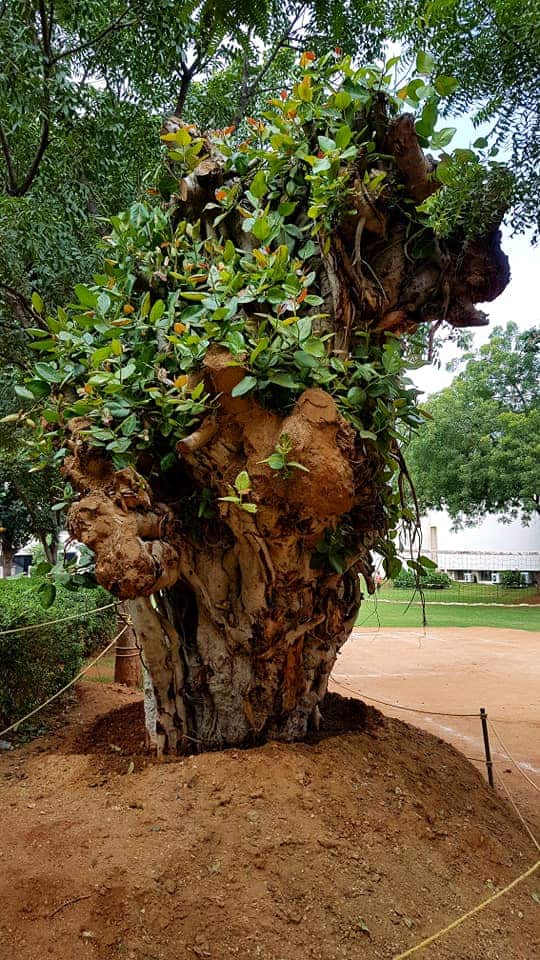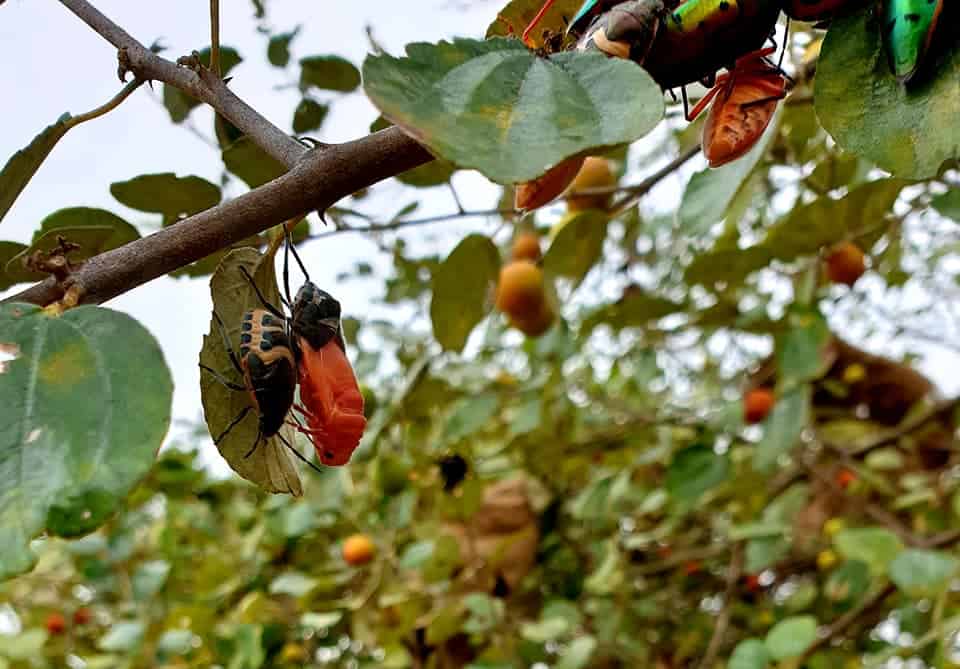In Part 1 of this series, we saw that tree transplantation is an arduous process, and could fail if not done properly.
Transplantation is now becoming popular in Bengaluru for Metro and road widening projects, but how cost-effective is this? How expensive is the process, and do the trees really make it? We explore this in Part 2 of the series.
Cost of tree transplantation: Thousands to lakhs
The cost of tree transplantation depends on several factors – the tree’s trunk size and perimeter, the number of trees to be transplanted, the distance between the old and new sites, and site conditions. “Based on these, the price usually ranges from Rs 1,200 to Rs 3 lakh per tree,” says B Ilango Subramaniyan, Proprietor of Jeyam Landscape Consultants which has been providing tree transplantation services in Bengaluru and other cities since 2003. Others involved in transplantation cite a similar price range.
Ilango explains that tree size is a major factor since it affects the kind of machinery, transport facilities, and effort required. “The amount is low in case of small trees or for shifting a garden. In the case of medium-sized trees with a trunk perimeter of 3-4 ft, the cost will come to Rs 5,000-10,000. If trunk perimeter is above 5 ft, the cost will rise to Rs 75,000 and can go up to lakhs.”
The costs also reduce if a large number of trees are being transplanted, since the machinery – JCB, cranes, and trailers – are charged per shift. For example, if there are many medium-sized trees, they can be uprooted much easier, and bunched together in trailers for transport, which would reduce the per-tree cost. “But if only one or two such trees have to be moved, the payment for all machinery has to be done for the entire eight-hour shift even if the works get completed much faster,” says Ilango. His company transplants fewer trees only if they are massive, for example, a 200-year-old banyan tree.
Read more: What does it take to transplant a tree?
Obviously, the cost will also increase if the tree has to be transported a long distance. And also based on site conditions – if a large tree becomes difficult to maneuver, or traffic causes delays in uprooting an avenue tree, etc, the costs will be higher.
“So, the 3-lakh price range is usually for 200 to 300-year-old trees which have to be transplanted 10-15 km away from the original site, under poor site conditions. A bigger crane would be needed to lift large trees, which would cost Rs 50,000 for an eight-hour shift. Even if you take an hour more, you’ll have to pay Rs 1 lakh,” Ilango says. Conversely, transplantation will be cheapest if there are many trees of small size, which can be planted in the same location.
What about survival rates after transplantation?
Survival rates have varied widely across different projects. For example, in Mumbai, a High Court-appointed inspection committee found in 2019 that over 60% of trees transplanted for the Metro 3 project had died. Survival rates have been low in the case of Delhi Metro too. These examples have led many to oppose transplantation altogether.
But there have been success stories. In Bengaluru itself, citizen groups have transplanted trees marked for felling in Whitefield and near Sarjapura Road , with 100% success. In Maharashtra, the PWD successfully transplanted trees while widening the Nashik-Trimbakeshwar road, even though some similar initiatives in the state had failed.

In Bengaluru, BMRCL has transplanted nearly 300 trees in 2017-18 in response to campaigns by environmentalists. But BBMP Tree Officer H S Ranganathaswamy, who is in charge of approving tree transplantation and felling, says he has not maintained any records of these trees. S Nityananda of Bengaluru Environment Trust (BET), who had campaigned for and followed up on the transplantations, says 70-80% of the trees have survived, based on his observations as well as conversations with BMRCL officers and contractors.
Experts say that survival rates depend on how transplantation is done, and more importantly on the care provided post-transplantation, as well as the tree species.
Uday Krishna is Founding Trustee of the NGO Vata Foundation in Hyderabad. Having transplanted around 3000 trees across states with an 80-85% success rate, he says, “Many contractors who transplant trees need guidance. Once the tree is uprooted by a JCB, some contractors use the JCB itself to lift and plant the tree. Though a crane is needed for this, they avoid it so as to save costs. This affects the tree’s survivability. Another common mistake is that post-transplant they stop watering the tree once leaves start sprouting (whereas regular watering is needed for 1-2 years after transplant).”

Certain species like neem and mango trees are said to be less likely to survive because of their root systems. Ilango says his company assures a 100% survival rate for nearly 200 varieties including peepal, banyan, coconut tree, honge tree, jacaranda, rain tree, and cannonball tree. “For around 10 species including mango, neem, and guava, we give only 50% guarantee. Some others like tamarind tree almost never survive, in our experience,” he says.
Harini Nagendra, who heads the Center for Climate Change and Sustainability at Azim Premji University, says there is little data on tree transplantation in India overall: “I haven’t seen any systematic studies on this. Anecdotally people will tell you that some types of trees are good for transplanting and some aren’t, but from what I’ve seen, everybody is guessing.”
So, is tree transplantation worth the trouble?
Harini emphasises that transplantation should be the last resort to save a tree even though it seems like an easy, win-win option: “The shock of transplantation is huge, given that its roots and branches are hacked. Also, there is research that shows that the tree and its roots, the soil, the neighbouring tree’s roots — all form an ecosystem underground that supports the tree. With transplantation, you’re disrupting this ecosystem, and moving the tree to a new place with different microorganisms and soil, and the tree has to establish those relationships again. It’s not easy.”
Given that transplantation has become more successful and popular over the years, many conservationists in the city like Nityananda favour it as the last resort to save trees. Recently, Bengaluru’s Tree Expert Committee (TEC) – laid out guidelines for transplantation to ensure better survival of trees. The TEC comprises academicians from the University of Agricultural Sciences (GKVK) and the guidelines were issued as per the Karnataka High Court’s orders in a PIL. However, even with the guidelines, activists worry whether due process for transplantation will be followed properly in all public projects.
Read More: How the High Court is curbing mindless tree felling in Bengaluru
For now, the court is giving directions on BMRCL’s transplantations based on the PIL. For example, a work order issued by BMRCL to a transplantation contractor in May sets aside separate budgets for transplantation and aftercare. The contractor has to maintain the trees for three years after transplantation, and their payment will depend on the trees’ survival. BBMP Tree Officer has to provide technical supervision during the process. Also, the court has ruled that the TEC should decide on the exact translocation sites.
But these orders have been in individual instances of tree felling by BMRCL. These procedures have not been codified so as to be applied to all government projects henceforth.
Harini says, “Who will monitor transplantations, and beyond the project who cares what has happened to them? The question is, will the High Court come back two years later and ask what happened to the trees. The court’s orders are very good, but whether it will finally work in our complicated system where everyone is always trying to circumvent rules, we’ll only know later.”
The trees along the ORR KIA Corridor Can Be Transplanted. At least 1000+ Trees, which are Small in Size, can be Transplanted